Where Do Bed Bugs Hide in Dale City, VA: How to Check for Signs of Bed Bug Infestations
 When people suspect bed bugs, many turn to online searches and read through the common signs of bed bug infestations. The red flags often relate the dried droplets of blood, molten skin, lined bite marks, and other such indicators. The constant pilfering of your blood leaving itchy, red welt marks is more than a nuisance. Though these vampires are not linked to spreading any known diseases, they do leave behind histamines that can cause breathing problems and exacerbate allergies. More often than you may think however, people will second guess what pest is creeping into your bed at night when you search the bed for signs of these nasty blood-lusting criminals. With this in mind, we at CSI Home & Commercial Services would like to help you look for these blood thirsty criminals.
When people suspect bed bugs, many turn to online searches and read through the common signs of bed bug infestations. The red flags often relate the dried droplets of blood, molten skin, lined bite marks, and other such indicators. The constant pilfering of your blood leaving itchy, red welt marks is more than a nuisance. Though these vampires are not linked to spreading any known diseases, they do leave behind histamines that can cause breathing problems and exacerbate allergies. More often than you may think however, people will second guess what pest is creeping into your bed at night when you search the bed for signs of these nasty blood-lusting criminals. With this in mind, we at CSI Home & Commercial Services would like to help you look for these blood thirsty criminals.
How to Find Bed Bugs During the Day
It is important to know as bed bugs are nocturnal, they look for safe, dark corners to spend the day in. Below are a few steps that can help you find the bed bugs in your home.
1) Look for Bed Bugs. Bed bugs are tiny, no bigger than an apple seed, giving them a major advantage. Have a flashlight handy when you go hunting and even a magnify glass to help you find these hiding masters. Aside from looking reddish and engorged after eating, bed bugs are flat and grayish brown.
2) Start in their last known location. The optimal place to start is starting at the place where they were last seen or suspected of their activities because they are likely still in the area. If they don’t have to, they don’t stray too far away from their meal. Start along the box spring, mattress, and bed frame. Be thorough. Check the crevices and if you do not see any, start looking in the nearby locations and furniture.
3) Check adjacent locations for bed bugs. Expand the search if no bed bugs are spotted to the adjacent furnishings, behind baseboards, frames, outlets and so on. Be sure to look along the curtains, curtain rods and all surrounding areas. Look in unconventional spots as bed bugs will hunker down nearly anywhere.
4) Follow the bed bug’s trail. Trails of evidence is left behind by bed bugs. Look for the clues and follow them; such as blood they were unable to digest and had to secrete, small dark red particles (there fecal matter), the skin, or shells that is their outer skeleton the bed bugs. Ned bugs will shed their skin as they mature into the next cycle. Their shells is commonly left outside their nesting area. A fairly identifiable to bed bugs is the smell they secrete. When they have larger numbers and are in concentrated areas, bed bugs will emit an odor that is obvious, smelling much like a musty, sweet smell.
5) Check cracks and crevices for bed bugs. With a flashlight and magnifying glass, the bed bugs’ minuscule size enables them to hide even in the smallest of spaces. Searching for bed bugs can be a task as you have to sure in every crack and crevice to confirm a bed bug infestation.
Bed Bug Inspections & Treatment
To ensure the bed bug inspection is done efficiently, and to avoid taxing investigations, call in the professionals of CSI Home & Commercial Services for an inspection and if any are found, our experts can help you eliminate them!
Common Rodents in Stafford, VA; Roof & Norway Rats and House & White Footed Mice
Have you ever watched Stuart Little and wondered if you could ever think of a mouse as a pet? There are some people that will keep mice as pets but not very many. Most homeowners see a mouse or rat on their property and start to freak out. Many times they will become obsessed with how to get rid of them. Today we are going to learn about what types of mice and rats are found most frequently here in Virginia and how you can get rid of them.
There are hundreds of different species of mice and rats that live in the United States. What part of the country you live in will determine what type of mice or rat species you could have in your home. Here in Virginia roof rats, Norway rats, common house mice, and the white-footed mouse are the most common species of rodents that are found.
Black Roof Rats
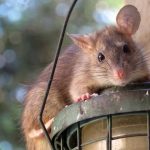 Roof rats are also called black rats, ship rats, and house rats. They are nocturnal animals which means that they are active at night time. Roof rats are typically more common in the coastal areas of Virginia. They normally live outdoors but if they can find food and shelter indoors they will next in homes as well. If they live indoors they frequently live in attics, ceilings, and walls.
Roof rats are also called black rats, ship rats, and house rats. They are nocturnal animals which means that they are active at night time. Roof rats are typically more common in the coastal areas of Virginia. They normally live outdoors but if they can find food and shelter indoors they will next in homes as well. If they live indoors they frequently live in attics, ceilings, and walls.
Brown Norway Rats
Norway rats are a larger than other rat species. Norway rats are about 16 inches long from head to the end of their tail. Like roof rats, Norway rats are nocturnal and actually prefer to live outdoors. If the population of Norway rats is large you may notice them during the day as well. They will nest underground, in sewers, in basements, and on the ground level of buildings. Norway rats eat grains, meats, seeds, cockroaches, fruit, and other food wastes. They frequently will dig through garbage to find their food.
House Mouse
As their name indicates house mice prefer to live indoors. They are very likely to infest buildings. House mice like to nest in more populated areas. Since they are smaller than rats it is easier for mice to get inside your home. They only need a small crack to squeeze into your home. They forage food and will eat just about anything they can find. House mice multiply very quickly. Female house mice may produce up to 50 mice in her lifetime.
White-Footed Mice
While house mice prefer to live in highly populated areas the white-footed mouse likes to live in rural and suburban areas. The white-footed mouse is one of the largest carriers of Lyme disease. In 2015 the Center for Disease Control ranked Virginia the 9th highest state in the country for confirmed cases of Lyme disease. The white-footed mouse eats insects, nuts, seeds, and berries. They live in forests where these food items are readily available to them.
Rodent Control
If you see signs of mice or rats in your home or on your property you will want to get rid of them as soon as possible. Their short reproductive cycles can make them a large problem in a short period of time. You can try to catch them with traps. Traps work better with mice than with rats because mice tend to be more curious than rats. If you are not able to get rid of the problem on your own give CSI Home & Commercial Services a call. We would be happy to come out and develop a plan to help rid your property of these unwanted rodents.
When Does Mosquito Season End in Fredericksburg, VA? October! Best Way to Control These Pests
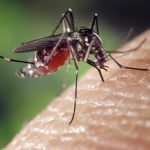 The sound of a buzzing mosquito whipping past your ear is annoying. Added to that is the fact they can be dangerous to your health because they can carry the Zika virus along with other mosquito-borne issues. If you discover you have a large mosquito problem, you’re already behind the eight ball because the best way to control mosquitoes is to prevent them from becoming a problem in the first place. It’s always important to use repellents to keep mosquitoes away, but there are also ways to make your yard less appealing for them.
The sound of a buzzing mosquito whipping past your ear is annoying. Added to that is the fact they can be dangerous to your health because they can carry the Zika virus along with other mosquito-borne issues. If you discover you have a large mosquito problem, you’re already behind the eight ball because the best way to control mosquitoes is to prevent them from becoming a problem in the first place. It’s always important to use repellents to keep mosquitoes away, but there are also ways to make your yard less appealing for them.
Best Ways to Control Mosquitoes on Your Property
1. Remove standing water. This is the best way to control mosquitoes because mosquitoes will use standing water to breed. The still water is very inviting, and they can breed in standing water that is only half an inch deep. These areas need to be removed. Puddles and small ponds are obvious ones but consider old tires, toys, buckets, bird baths, clogged gutters and plant bowls.
2. Mow tall grass and trim shrubbery. These are areas that mosquitoes like to hang out and rest. Your yard may seem like it’s free of mosquitoes until you get to parts that have long grass. Walking in long grass stirs them up, co make sure your grass is cut to 5 inches or shorter to force them to find another yard to hang out in. Get rid of any vegetation that grows quickly, like weeds.
3. Use mosquito repelling plants. There are plants that you can use in your landscaping that will deter mosquitoes. While it won’t eliminate them, it will reduce their numbers and make it harder for them to reproduce. Planting basil can be an excellent way to keep mosquitoes away and is relatively easy to grow. Lemon balm is also effective but invasive and will need to be controlled or you’ll just be creating a place for them to hide. Citronella grass can also be used because citronella has strong mosquito-deterring qualities.
4. Mosquito fog areas of your property. An occasional fogging of yards that are prone to mosquitoes can be effective Fogging areas that are shady or with long grass and shrubs or areas that are 12-15 feet close to human activity can reduce mosquito populations. The chemicals used in fogging need to be used in moderation and in a targeted way. Keep in mind that this only sends mosquito elsewhere. It won’t kill them or prevent them from breeding. These chemicals can be applied with garden sprayer-like equipment. If you’re concerned about doing it yourself, call the professionals.
5. Mosquito repellents. There are devices you can use that will kill mosquitoes on contact. Remember, it’s best to keep them away in the first place but if you need an immediate control then consider using zappers, magnets or mosquito traps. You can always fall back on mosquito-repellent or spray to keep them from biting you because those bites are both annoying and dangerous to your health!
Mosquito Control
If you’ve taken these steps and still find you have too many mosquitoes hanging out in your yard, contact CSI Home & Commercial Services of Virginia for help!
How to Get Rid of Weeds & Grow Grass in Manassas, VA; Lawn Weed Control Services
 There is nothing more beautiful than thick, green turf. Keeping it weed free during the summer can be a battle. Luckily, there are several things that can be done to keep your grass free from the unsightly weeds that tend to grow during the season. CSI Home & Commercial Services is here to share some tips to help you keep your grass weed free this summer.
There is nothing more beautiful than thick, green turf. Keeping it weed free during the summer can be a battle. Luckily, there are several things that can be done to keep your grass free from the unsightly weeds that tend to grow during the season. CSI Home & Commercial Services is here to share some tips to help you keep your grass weed free this summer.
Garden Weed Prevention
When it comes to the weeds that grow in your lawn, the best time to deal with them is in the early spring and late fall. This allows you to take full advantage of the growing season. Surprisingly, the biggest defense you can have against weeds in your lawn is a thick, healthy turf. If you have a lawn that is full of weeds, it often indicates that there is another issue like nutrient imbalances in the soil. If you are in the process of growing new grass, be sure to purchase high-quality seed that will be free of weeds.
Lawn Weed Control
If you have a little patch here and there where weeds are growing, it can be beneficial to simply dig them out rather than treating your entire lawn. For a heavy infestation, your lawn health should be your first and major concern. For all the weed problems you may face in between, there are several herbicides that can be used to help control the problem.
• Pre-Emergent Herbicides– These herbicides work to prevent weed seeds from germinating. They are great for spot treatment during the winter or summer dormant season.
• Post Emergent Herbicide– If you miss the window for using pre-emergent herbicides, post emergent herbicide is used to kill weeds that are already actively growing. The herbicide is sucked up by the roots of the plant and effectively kills it.
• Selective Herbicides– These are herbicides that are formulated specifically for a certain type of weed. They can be sprayed on other plants that won’t be effected by it because of its formulation.
• Non-Selective Herbicides– Non-selective herbicides will kill any plant they come in contact with. They should only be used when you are doing a spot treatment.
• Total Vegetation Herbicides– These herbicides will not only kill any plant that they come in contact with, but they will sterilize the ground as well. They should be used very carefully because there will not be anything that can grow there for a certain time after it has been treated.
Proper Herbicide Application Methods
Anytime you are treating your lawn with any type of herbicide, you should be doing so with great caution. These chemicals are strong and can be a danger when they aren’t used properly. Always read and follow manufacturer’s instructions carefully and be sure you are using the right product for your need.
Weed Control & Lawn Care Services
Choosing the right herbicide for your lawn can be tricky. If you are having a difficult time getting your lawn healthy, you can count on the experts at CSI Home & Commercial Services for help. Our experience and training make us the leading choice in lawn care. Call us today!
Signs & Damage of Carpenter Ants in Fairfax, VA; How to Get Rid of Carpenter Ant Pests
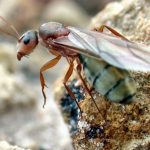 Ants are a rather common pest that many people experience from time to time. They are a nuisance and some can deliver rather painful pinches when they feel threatened. As ants march throughout home pilfering what food they can, their numbers seem never ending. Carpenter ants are one of the worst ants because of their habits of excavating wood to build their nests. Unlike termites, they do not eat the wood, but are nearly as destructive. We at CSI Home and Commercial Services would like to share the fundamentals concerning carpenter ants.
Ants are a rather common pest that many people experience from time to time. They are a nuisance and some can deliver rather painful pinches when they feel threatened. As ants march throughout home pilfering what food they can, their numbers seem never ending. Carpenter ants are one of the worst ants because of their habits of excavating wood to build their nests. Unlike termites, they do not eat the wood, but are nearly as destructive. We at CSI Home and Commercial Services would like to share the fundamentals concerning carpenter ants.
Carpenter Ant Identification
Carpenter ants are one of the largest ants in the United States, ranging 1/8 – 33/64 inches long. They are commonly black but some species range in color from jet black, to dark brown and they can also be red, black, yellow, orange, yellowish tan or light brown. The worker carpenter ants feature large mandibles.
Damage Caused By Carpenter Ants
Carpenter ants are drawn to moist, decaying, or hollow wood, both outside and inside. Carpenter ants prefer to establish their colonies in galleries excavated from damp or damaged wood. To form their nests and provide passageways for movement from section to section of the nest, they cut galleries, or tunnels, into the grain of wood. Carpenter ants keep their nesting site clean, unlike subterranean termites that line their galleries with moist soil; carpenter ant galleries are smooth as if it were sandpapered.
Where Do Carpenter Ants Live & What Do They Eat?
These ants can be found in both dead and living trees, stumps and rotting logs. Carpenter ants will also nest inside homes or buildings where wood is found, especially if it has been exposed to extreme moisture. As mentioned, they do not eat wood; they simply remove it into small piles outside their nests. They typically eat human scraps, having a fondness especially for sweats and meats. Carpenter ants will also feed off other insects.
Signs of Carpenter Ants
You can spot the signs of carpenter ant infestations if you are aware of them. Below you will find some common red flags.
1) The most obvious is seeing carpenter ant swarmers that have wings and workers inside the home. Workers are foraging for food and the swarmers are the reproducers that leave a colony after it matures to begin a new one. Seeing the winged ants indicate a well established colony.
2) Debris is a sign of their activity that is produced as they carve their tunnels in the wood. You will find wood shavings that look like saw dust, parts of dead ants, and so on piled up.
3) Sometimes you can hear the rustling sounds of their day activities in the wood which suggests their presence.
Carpenter Ant Control
If you have carpenter ants in your home, or in close proximity, it is crucial you get them efficiently exterminated. Leaving these ants to flourish can result in heavily damaged structures or ruined furniture and repairs can be very costly. If you suspect carpenter ants, call the experts of CSI Home and Commercial Services and let our trained professionals put a plan in action to efficiently remove these ants from your home or business.
Signs Termites are Causing Damage in Your Lorton, VA Home; Mud Tubes, Wings, Frass & More
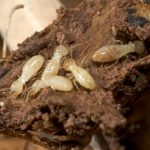 Termites are notorious for the destruction they cause. Having mastered their chaos for over 120 million years, they cost the commercial and residential owners in the United States billions of dollars a year in damage. With over 2,000 of species of termites found around the globe there are about 50 known termite species in the United States classified under three groups that include subterranean, drywood, and dampwood termites. In Virginia the most common termite species are the Eastern subterranean termites, and though not nearly as common, West Indian powderpost termites, which are prone to infesting furniture, and though they are not native to the area. Also it is a very slim possibility that Drywood or dampwood termites could been brought in to your home. We at CSI Home and Commercial Services would like to discuss the fundamentals of the termites of Virginia.
Termites are notorious for the destruction they cause. Having mastered their chaos for over 120 million years, they cost the commercial and residential owners in the United States billions of dollars a year in damage. With over 2,000 of species of termites found around the globe there are about 50 known termite species in the United States classified under three groups that include subterranean, drywood, and dampwood termites. In Virginia the most common termite species are the Eastern subterranean termites, and though not nearly as common, West Indian powderpost termites, which are prone to infesting furniture, and though they are not native to the area. Also it is a very slim possibility that Drywood or dampwood termites could been brought in to your home. We at CSI Home and Commercial Services would like to discuss the fundamentals of the termites of Virginia.
Termite Caste System
Termites live in colonies and in general, are social insects. Their castes include workers, soldiers, and swarmers (which are the reproducers and/or the kings and queens). Workers are responsible for nearly everything; from constructing the galleries, or tunnels, to foraging for food, taking care of the young, feeding the king, queen, and soldiers, repairing the tunnels, and so on. Soldiers are genetically enhanced to defend the queen, colony, and nest from, predators, and other known enemies. Swarmers are the only termites that have wings, once they live the colony, and become kings and queens of a new colony, they shed the wings and reproduce.
Termite Damage
Subterranean termites actually hunker down beneath the soil under the foundation of the property, easily gaining access to the structure where they forage for food, without the owner being aware of their activities. Termites not only consume wood, but all cellulose materials including destroying furniture, books, cloth and carpets. Once the infestation begins, the destruction can compromise the integrity of the building’s structure.
Signs of Termites
When swarmers leave their original colony to begin a new colony, it is generally in the late spring, early summer. Once they find a place they like, they will shed their wings. Discarded wings around windows and doors is a sign termites have chosen your home or business to establish their new colony. Late signs of a termite infestation include the following:
– Exterior of wood that appears thin and brittle and feels hollow when you tap on it because termites will consume and excavate the inside of wood.
– Walls, ceilings, and floors that sag.
– Mud-like tubing stretching up from the ground to the ceiling that allows them to travel from their nesting areas to a food source.
– Bubbling paint and tiny holes.
Termite Inspection & Treatment
After you have witnessed enough of the red flags to believe your home or business is infested with termites or you just want to be proactive, you can call in professional pest control company for an inspection service. A professional, such as one from CSI Home and Commercial Services, will perform a comprehensive termite inspection on the structure, soil, and surrounding property grounds. Once the termites are confirmed there are several treatment options that are available depending on the surrounding circumstances, the most optimal will be selected. Contact us to schedule your inspection today!
Professional Air Quality & Surface Testing Sampling for Mold Spores in Woodbridge, VA
If you have experienced water damage due to accidental flooding or flooding caused by natural disaster your indoor environment may be contaminated with mold spores which may not necessarily be visible to the naked eye. The knowledgeable experts at CSI Home & Commercial Services recommend mold testing to determine if you and your family members are at risk for any potential contamination. There are a number of ways that mold testing can be performed in your home or business including air and surface testing.
How Mold Testing Is Performed in Your Home?
In layman’s terms, mold testing begins with taking a sample of a surface or the air in a specified area. This testing will determine the type of mold present and its ability to multiple within the affected area.
Air Samples: air samples can be collected in a number of ways. One of the most common methods is called a spore trap. The spore trap works by allowing the air to pass through an area with an adhesive which traps the air as it passes through the devise. Any particles contained in the air including mold spores will essentially become trapped. The spore trap is then sent to a lab for testing and analysis. Upon arrival, the spore trap will be opened and the technician will apply a series of stains to identify the types of mold spores, if any found in the air.
Surface Samples: Surface samples can be collected in a number of different ways including: bulk samples, swab samples, and tape samples.
Bulk Samples: a small sample of the surface is removed and packaged to be sent to the lab for testing.
Swab Samples: just as the name implies, swab samples are collected using a swab (similar in appearance to a cotton swab) which can be rubbed in a predetermined area that has been measured beforehand before being sent to the lab for testing
Tape Samples: tape samples can be collected using a piece of tape that is pressed up against a surface to remove and collect particles. The tape is then sealed in a container and sent off for testing and analysis.
Professional Air & Surface Mold Testing
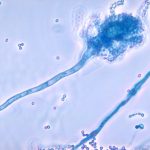 Once the samples arrive at the testing facility they will be transferred onto a glass slide before stain is added to determine the presence of mold and its subsequent growth rate. It is important to remember that once mold is visible to the naked eye it has already established a growth pattern within its life cycle. The key to testing air and surface mold is to determine the presence of microscopic mold spores before the environment and the occupants within are exposed. Air testing is one of the most effective ways to determine whether the presence of mold has spread through the air conditioning system and contaminated numerous areas within the structure. While mold sampling is primarily performed to provide a cross-section of contamination it can also determine which areas will need to be protected against cross-contamination.
Once the samples arrive at the testing facility they will be transferred onto a glass slide before stain is added to determine the presence of mold and its subsequent growth rate. It is important to remember that once mold is visible to the naked eye it has already established a growth pattern within its life cycle. The key to testing air and surface mold is to determine the presence of microscopic mold spores before the environment and the occupants within are exposed. Air testing is one of the most effective ways to determine whether the presence of mold has spread through the air conditioning system and contaminated numerous areas within the structure. While mold sampling is primarily performed to provide a cross-section of contamination it can also determine which areas will need to be protected against cross-contamination.
Mold Testing & Home Health Services
To learn more about professional mold remediation services, contact the knowledgeable experts at CSI Home & Commercial Services today.
How to Prevent & Get Rid of Norway & Roof Rats in the Walls of Your Dale City, VA House
In general, rodents are able to adapt to living with or nearby people. They typically invade homes and businesses to escape poor weather conditions or in an effort to forage for food and water. Once they have moved, evictions are impossible without professional assistance. Rats are known carriers of different diseases and other ailments. As they forage for food and nesting materials, their fecal and urine deposits will contaminate the surfaces, including the food they feed from. Rats are fairly destructive. There are even documented cases where they gnawed through plastic and steel pipes to get to water. In any case, prevention and control is essential when it comes to dealing with the rats in Virginia. Management not only includes professional treatment but also sanitation practices, clutter removal, and other such preventative steps. With that in mind, we at CSI Home and Commercial Services would like to take the opportunity to discuss the two most common rat species in Virginia; Roof Rats and Norway Rats.
Norway Rats
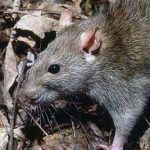 These rats are typically found where people are and are known as the “big rats”. Including their tails, Norway rats can potentially reach 16 inches in length. In comparison to other urban rodents, these rats are fairly bulky. Even preferring to live around people, these rats still prefer the outdoor habitat and being that they are a burrowing rodent, depending on the protection of their underground burrows, are often found there. Ground levels of buildings, basements, and sewers are also other nesting sites. Despite their instincts to be more active during the night than during the day, living in areas where the population is great and the competition for food is a factor in whether their activities can be seen during the day. Norway rats are also fond of the garbage left behind by people and will devour what they can. Being omnivorous allows them to have options for meal time that include seeds, fruit, grains, meats, cockroaches and other refuse found around homes and businesses. Being on alert at all times, they are wary of any perceived threats, making them a challenge to remove for those without the proper training and effective products.
These rats are typically found where people are and are known as the “big rats”. Including their tails, Norway rats can potentially reach 16 inches in length. In comparison to other urban rodents, these rats are fairly bulky. Even preferring to live around people, these rats still prefer the outdoor habitat and being that they are a burrowing rodent, depending on the protection of their underground burrows, are often found there. Ground levels of buildings, basements, and sewers are also other nesting sites. Despite their instincts to be more active during the night than during the day, living in areas where the population is great and the competition for food is a factor in whether their activities can be seen during the day. Norway rats are also fond of the garbage left behind by people and will devour what they can. Being omnivorous allows them to have options for meal time that include seeds, fruit, grains, meats, cockroaches and other refuse found around homes and businesses. Being on alert at all times, they are wary of any perceived threats, making them a challenge to remove for those without the proper training and effective products.
Roof Rats
Roof rats have a tendency to stick to warmer coastal areas but can be found inland as they stow away in cargo or shipping containers. These rats have other aliases that include ship rats, black rats, and house rats. Roof rats tend to be more active during the day than the night and though they are at ease living well off the environment outside, they will just as easily slip into homes and live in attics, ceilings, and wall voids to take advantage of the convenience of the food and water supply. These rats are known to gnaw through wiring, causing electrical circuit issues and even electrical fires.
Rat Rodent Control & Removal
No matter which rat is infiltrating your home or business in Virginia, call in the experts of CSI Home and Commercial Services to avoid property damage and ailments. Our experts will take care of the problem in a timely manner with efficiency.
How to Get Rid of Common House Mice Rodents in the Walls of Your Stafford, VA Home
Much like the Norway rat, the common house mouse is an old world pest that is believed to have come to America by hitching a ride on trade ships. The house mouse is active all year long but become increasingly more intrusive during the fall and winter seasons. When the cold sets in, and food and water become harder to find, you might begin to see an explosion of mice and rats. CSI Home & Commercial Services of Virginia will share more about the house mouse and how you can help keep them out of your home this winter.
Where Do Mice Live in a House?
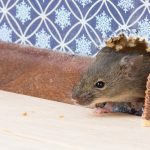 The fur of the house mouse is short and can vary from brown, gray and black with a lighter under belly. Both the ears and the tail of a house mouse are hairless. House mice have a relatively large pair of eyes and ears. Despite their name, the house mouse is actually most often found in fields and in high grass areas. They are quite adventurous and like roaming their territory. Being field dwellers, house mice prefer nuts and seeds. However, they will eat just about anything when necessary.
The fur of the house mouse is short and can vary from brown, gray and black with a lighter under belly. Both the ears and the tail of a house mouse are hairless. House mice have a relatively large pair of eyes and ears. Despite their name, the house mouse is actually most often found in fields and in high grass areas. They are quite adventurous and like roaming their territory. Being field dwellers, house mice prefer nuts and seeds. However, they will eat just about anything when necessary.
What Attract Mice to a House, Apartment or Business Premises?
When fall sets in, house mice sense the change of seasons and know they will need to find a cozy place with a food source to hide out the winter seasons. This is the time of year when they will be becoming more desperate to invade human domains. Due to the sense of warmth and the smell of food, homes, businesses, and especially restaurants and groceries stores often see house mice attempting to enter their structures. House mice are small and often use gaps under doorways, through piping, and electrical lines to enter into homes and other structures.
How to Seal Entry Points & Prevent Mice
When controlling and preventing house mice from entering your home, you will want to use a cement mixing compound and seal all gaps that are the size of a pen or bigger. Preventing house mice from entering into your home is an important step. This step will also include repairing weather stripping or window screens on doors and windows. The second step in preventing mice is cleanliness. If no food or crumbs are left in places where mice can gain easy access to them, this helps to prevent mice. Additionally, keeping the inside and outside clean and tidy is another popular methods.
Mice Rodent Control & Removal
One pest control method used by professional pest companies is traps. Traps vary from snap traps, poisonous baits to bait and live capture traps along with sticky traps. Professional pest companies know the best and most effective placement of traps. If you’re struggling will a pest invasion, whether it be mice, rats or any other form of pest, contact CSI Home & Commercial Services of Virginia. We provide for seasonal pest control to help you combat each pest your home encounters. Contact CSI Home & Commercial Services of Virginia today!
How to Get Rid of Wasps & Nests in Fredericksburg, VA & Stop Stinging Insects Coming Back
Virginia is no stranger to wasps. They are found throughout the world, reminding everyone who threatens their nests of their existence. With the various stinging pests to into contact with, wasps are a nasty one. Unlike bees, wasps have the ability to deliver painful stings multiply times until the feel threat has been neutralized. We at CSI Home & Commercial Services would like to take the opportunity to discuss the wasps in Virginia.
Wasps Are Aggressive & Have Been Known to Fly in Your Face & Seemingly Sting for No Reason
Wasps can be social or solitary insects and when they belong to colony, they can be fairly aggressive to who or whatever they see as a potential enemy. If you have a problem with a wasp nest on your property, we recommend that you contact a professional to avoid any problems that can ensue. Like bees, their venom can cause allergic reactions and depending on your sensitive can be mild to severe. Throughout Virginia there are two wasps most common in the area; Yellow jackets and Paper Wasps.
Yellow Jackets Wasps
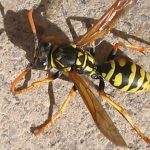 Yellow jackets wasps have thin bodies with a more defined waste in comparison to bees and reach up to 5/8” long. As their name suggests, their appearance is primarily a black body with yellow markings although some species may have white markings instead. Despite the mayhem they can cause, these wasps are actually considered beneficial as they eat and help control the population of beetle grub, flies, and other insects. Yellow jackets are often found scavenging trash and picnic areas looking for fish, meats, and sugary delicacies left over from human gatherings. Yellow Jackets will typically build their nests at ground level. They can be found in wall voids, around or under porches, in sidewalk cracks, and base of trees. Some yellow jacket species will also construct their nests off the corners of buildings, on hanging branches, or in bushes. Because yellow jackets are known to be fierce defenders of their colonies they will aggressively attack any perceived threat, but generally, they are not inclined to pick a fight with people. They are equipped with lance-like stingers that feature small barbs that deliver very painful stings that can also induce allergy symptoms.
Yellow jackets wasps have thin bodies with a more defined waste in comparison to bees and reach up to 5/8” long. As their name suggests, their appearance is primarily a black body with yellow markings although some species may have white markings instead. Despite the mayhem they can cause, these wasps are actually considered beneficial as they eat and help control the population of beetle grub, flies, and other insects. Yellow jackets are often found scavenging trash and picnic areas looking for fish, meats, and sugary delicacies left over from human gatherings. Yellow Jackets will typically build their nests at ground level. They can be found in wall voids, around or under porches, in sidewalk cracks, and base of trees. Some yellow jacket species will also construct their nests off the corners of buildings, on hanging branches, or in bushes. Because yellow jackets are known to be fierce defenders of their colonies they will aggressively attack any perceived threat, but generally, they are not inclined to pick a fight with people. They are equipped with lance-like stingers that feature small barbs that deliver very painful stings that can also induce allergy symptoms.
Paper Wasps
In North America paper wasps have 22 species that grow to be between 3/4” and up to just over an inch long. They have dark brown bodies with yellow markings and black wings, but their colors can vary. Their nests are very paper like because it is constructed of plant materials and their saliva. Elaborate compartments are built to lay eggs and raise the young within the nests. They build these intricate nests in sheltered areas such as under door frames, eaves of structures, and window sills. Paper wasps aid in pollination by feeding off the nectar as well as feeding a variety of insects to the larvae, controlling populations. Paper wasps can deliver one of the most painful stings among wasps and will do so when they feel in danger or the nest is threatened. Just like yellow jackets, people can find themselves allergic to their stings. Finding their nest and removing it should strictly left to the professionals.
Stinging Insect Removal
If you have any wasps or other stinging insects close to your home or business, contact CSI Home and Commercial Services and let our experts help keep your loved ones safe. Contact us for all your pest control and home inspection needs.




